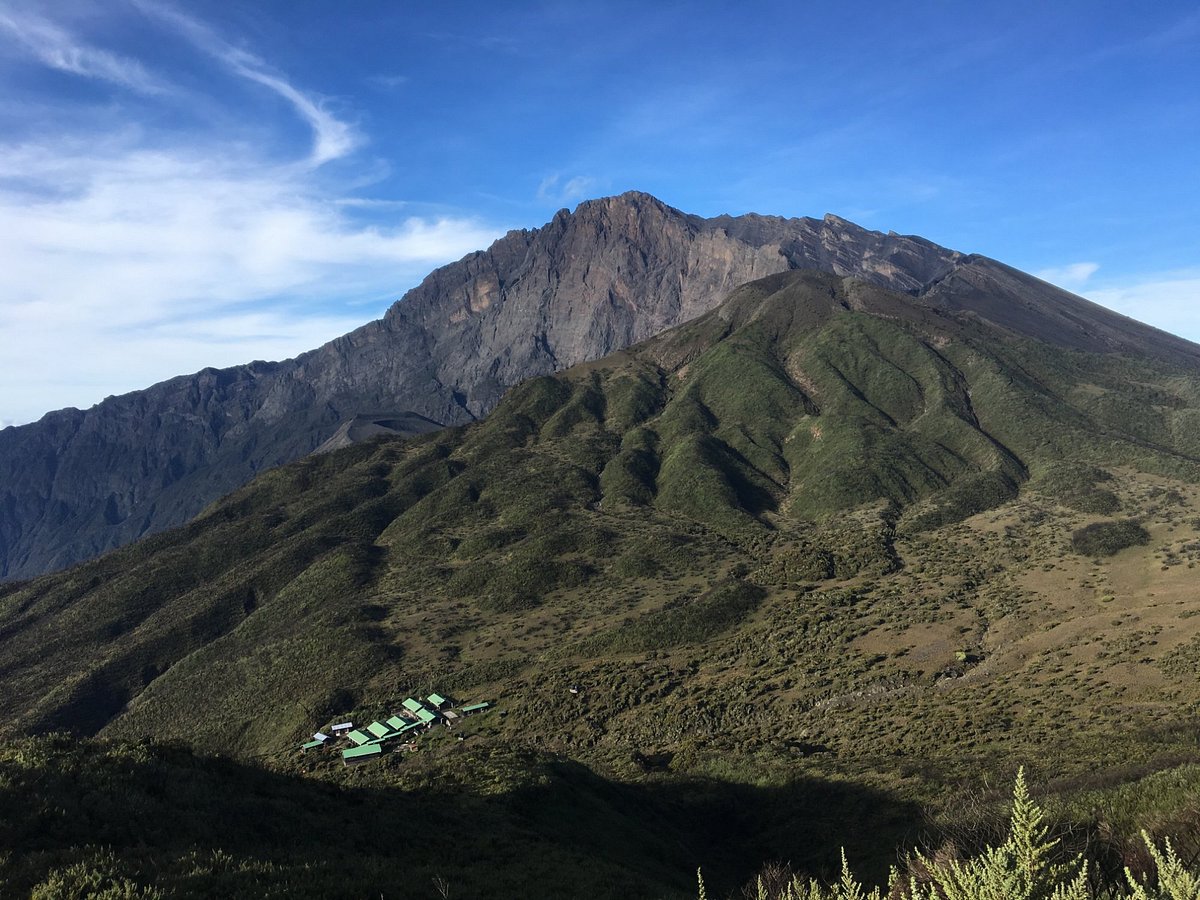Mount Meru

Mount Meru
Overview
Mount Meru, standing at 4,566 meters (14,980 feet), is Tanzania’s second-highest mountain and the fifth-highest in Africa. Located within Arusha National Park, Mount Meru is a dormant stratovolcano with a stunning horseshoe-shaped crater, offering panoramic views of the surrounding landscapes and an incredible vantage point of Mount Kilimanjaro. The mountain’s diverse ecosystems range from dense rainforests to alpine deserts, making it a haven for wildlife and a fantastic destination for trekking enthusiasts. Less crowded than Kilimanjaro, Mount Meru provides a challenging yet rewarding climb that includes encounters with wildlife, breathtaking landscapes, and dramatic volcanic scenery.
Wildlife
Mount Meru is home to a variety of wildlife, thanks to its location within Arusha National Park. Hikers may encounter giraffes, buffalos, colobus monkeys, bushbucks, and elephants along the lower slopes. The dense forest is also home to leopards, though they are rarely seen. The trek offers a unique experience, as climbers often spot wildlife in their natural habitats, with the lush montane forest providing excellent cover and food sources for many species. Rangers typically accompany trekkers to ensure safety during the ascent, as wildlife sightings are frequent on the first two days of the climb.
Birds
Birdwatchers will find Mount Meru a paradise, with over 400 bird species inhabiting the area. The montane forests are alive with the sounds of Hartlaub's turacos, trogons, and sunbirds, while raptors such as the Verreaux’s eagle, African crowned eagle, and augur buzzard soar above the slopes. The higher altitudes are home to alpine birds like the scarlet-tufted malachite sunbird, adding to the diversity of avian species found in the region. Birdwatching is excellent year-round, with the best sightings usually during the dry season when the weather is clear.
Best Time To Visit
The best time to climb Mount Meru is during the two dry seasons: June to October and December to February. These periods provide the most favorable weather conditions for trekking, with clear skies and lower chances of rain, making the trails less slippery and the ascent more enjoyable. Climbing during the dry seasons also offers the best panoramic views of Mount Kilimanjaro and the surrounding landscapes. The rainy seasons, from March to May and November, can make trails muddy and slippery, making the climb more challenging.
Weather & Climate
Mount Meru's climate varies significantly with elevation, ranging from warm and humid at the base to cool and windy at the summit. The lower slopes have a tropical climate, with temperatures between 20°C to 25°C (68°F to 77°F). As climbers ascend, the temperatures drop, especially at night, where temperatures at the summit can reach freezing levels. The dry seasons (June to October, December to February) offer the most stable weather, while the wet seasons (March to May, November) bring heavier rainfall and cloudy conditions, which can limit visibility.
Getting There
Mount Meru is easily accessible from Arusha, Tanzania, located about 25 kilometers (15.5 miles) from the city center. The climb typically starts from the Momella Gate in Arusha National Park, and the park is about a 45-minute drive from Arusha or roughly an hour and a half from Kilimanjaro International Airport. Most visitors arrange guided treks through tour operators, who provide transportation, porters, guides, and other logistics. A guided trek is mandatory for safety and conservation reasons, and climbers must be accompanied by armed rangers due to the wildlife presence on the lower slopes.
